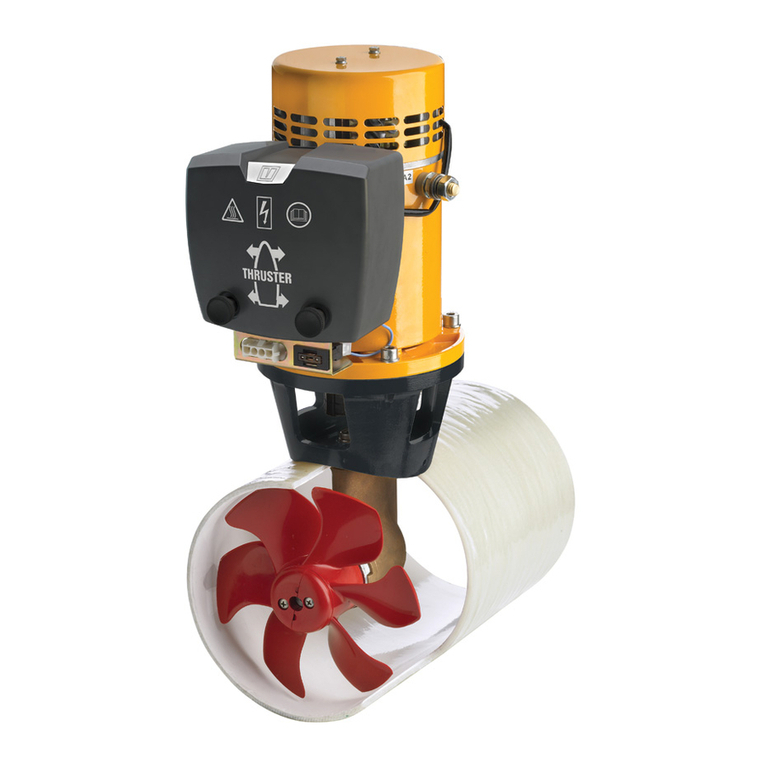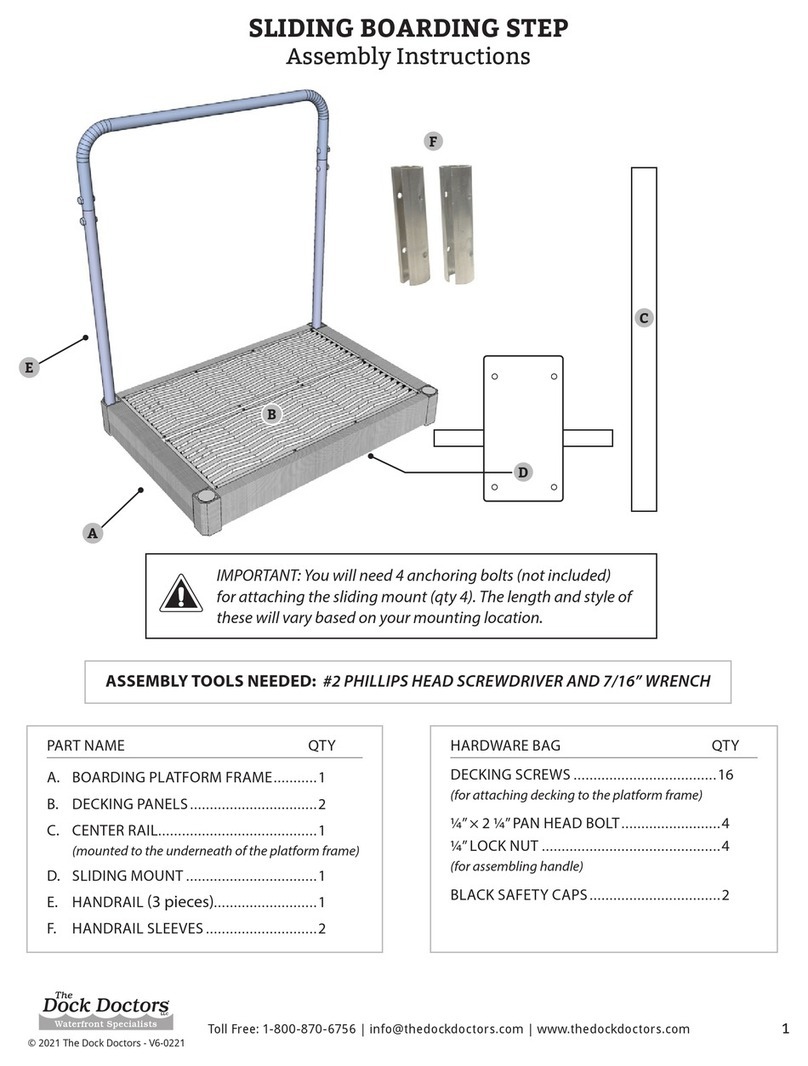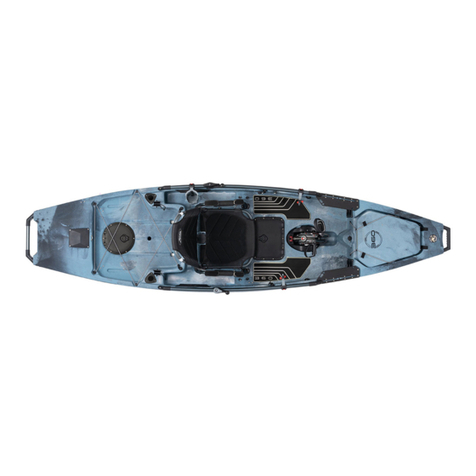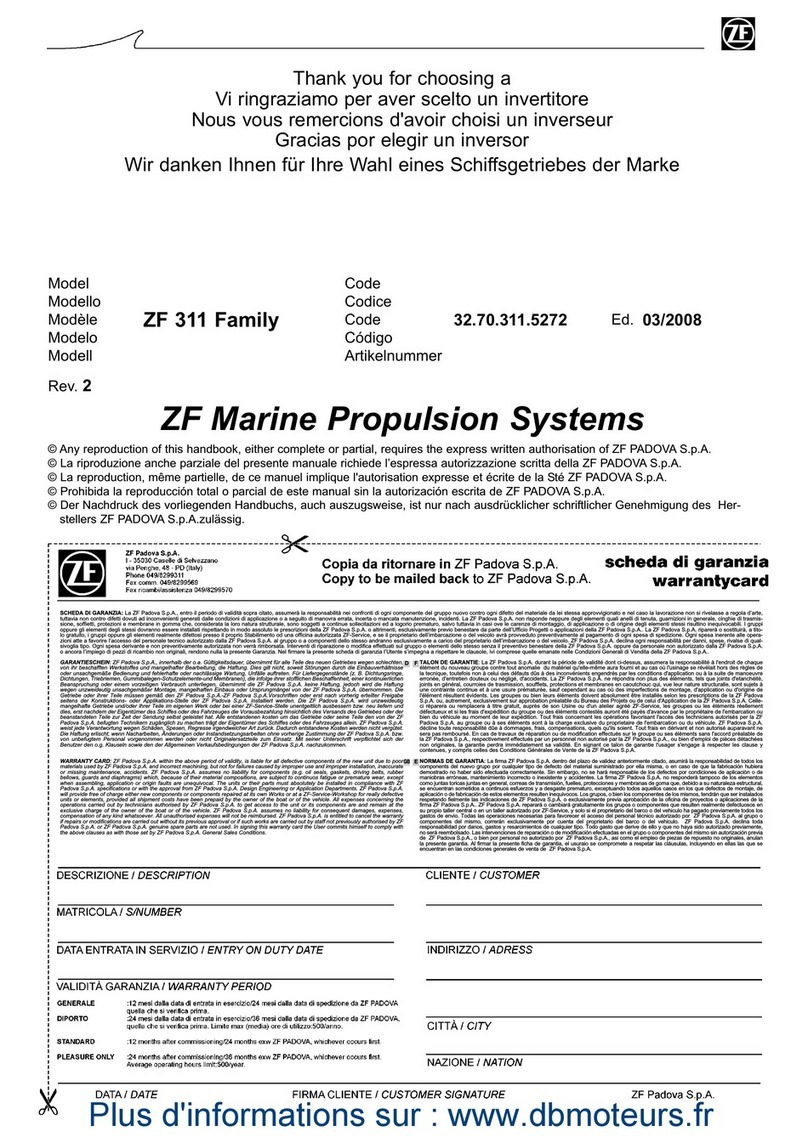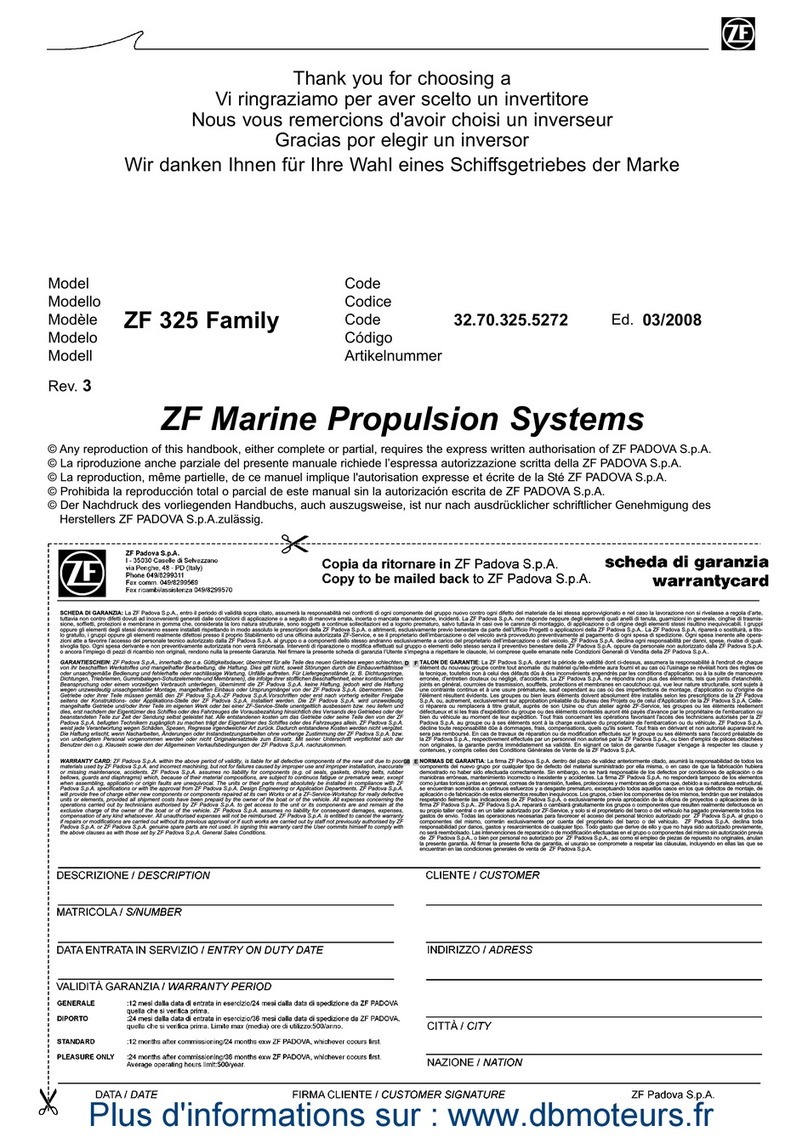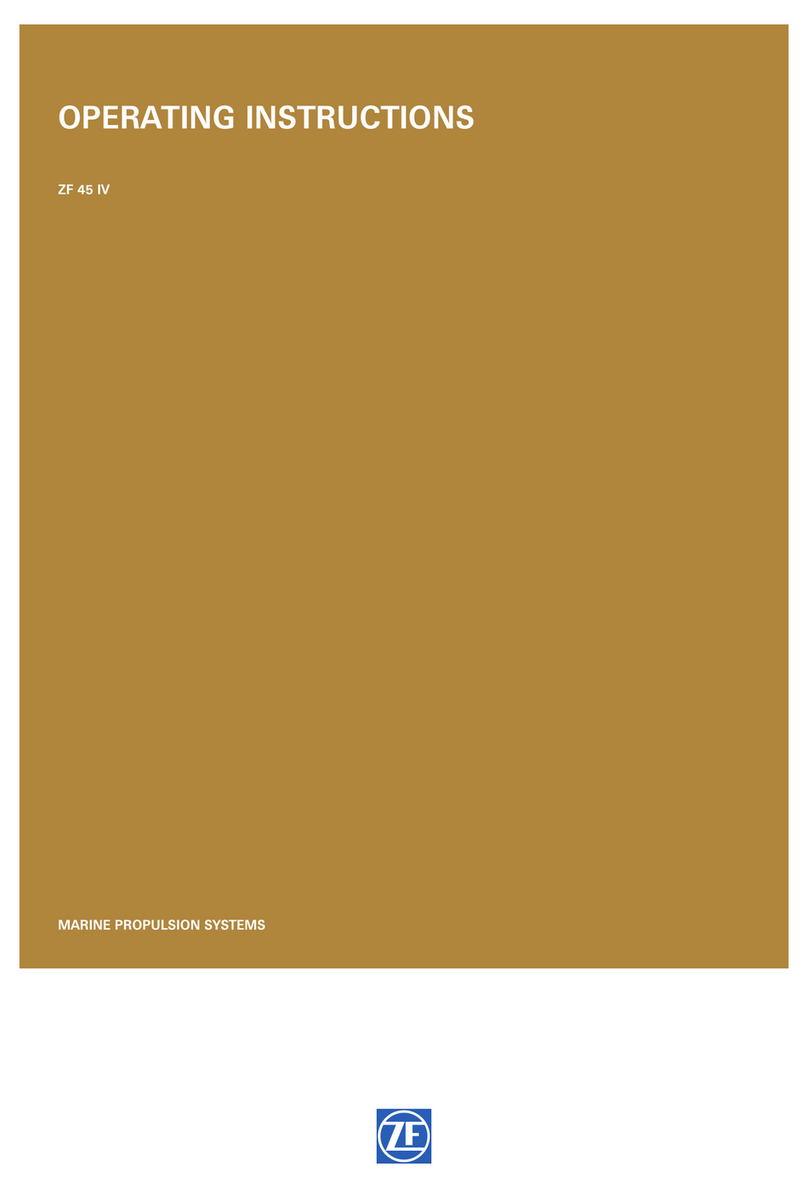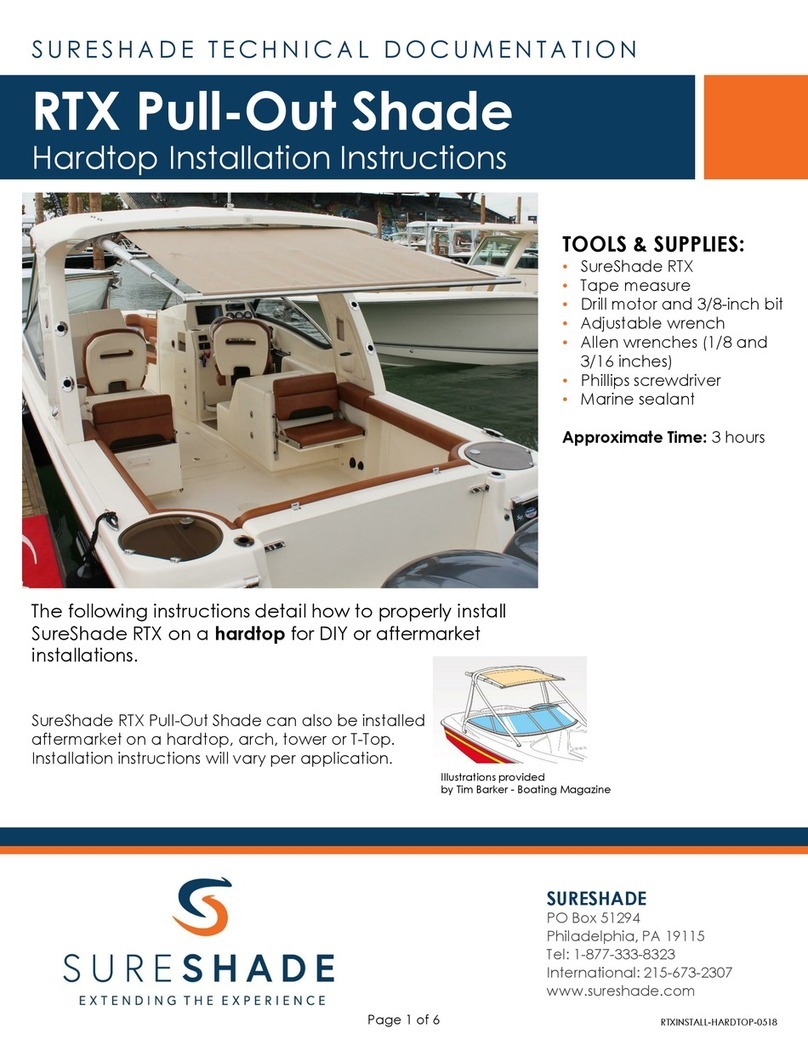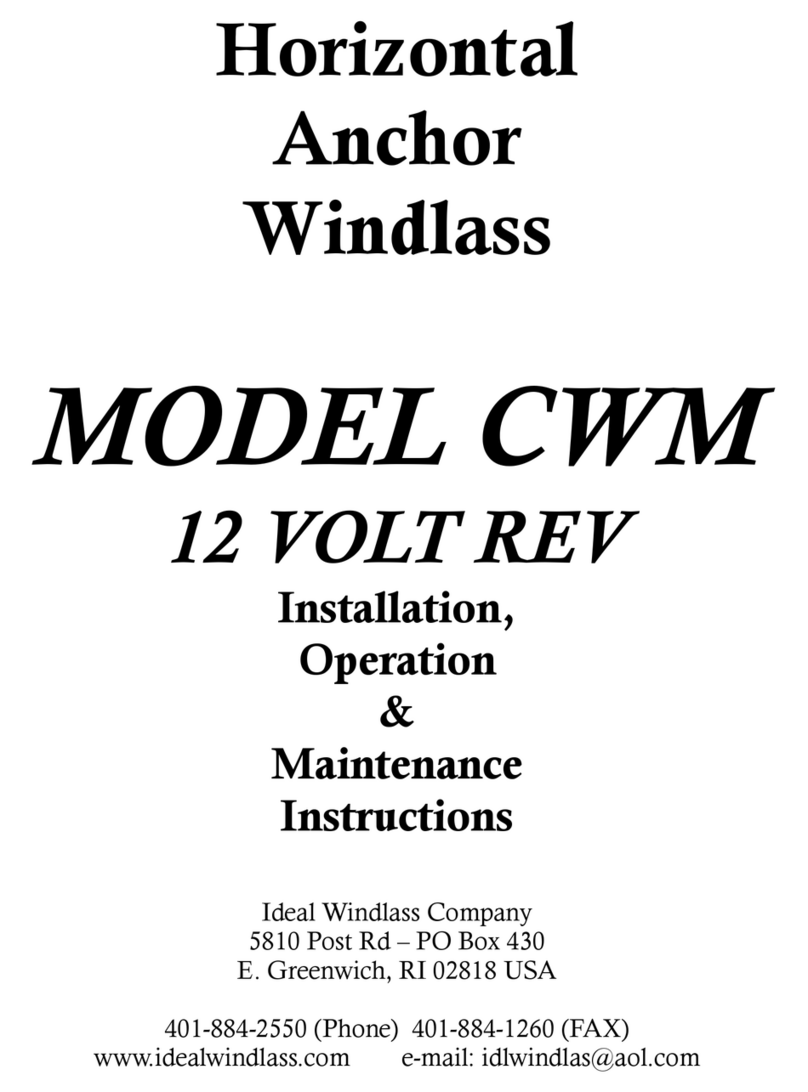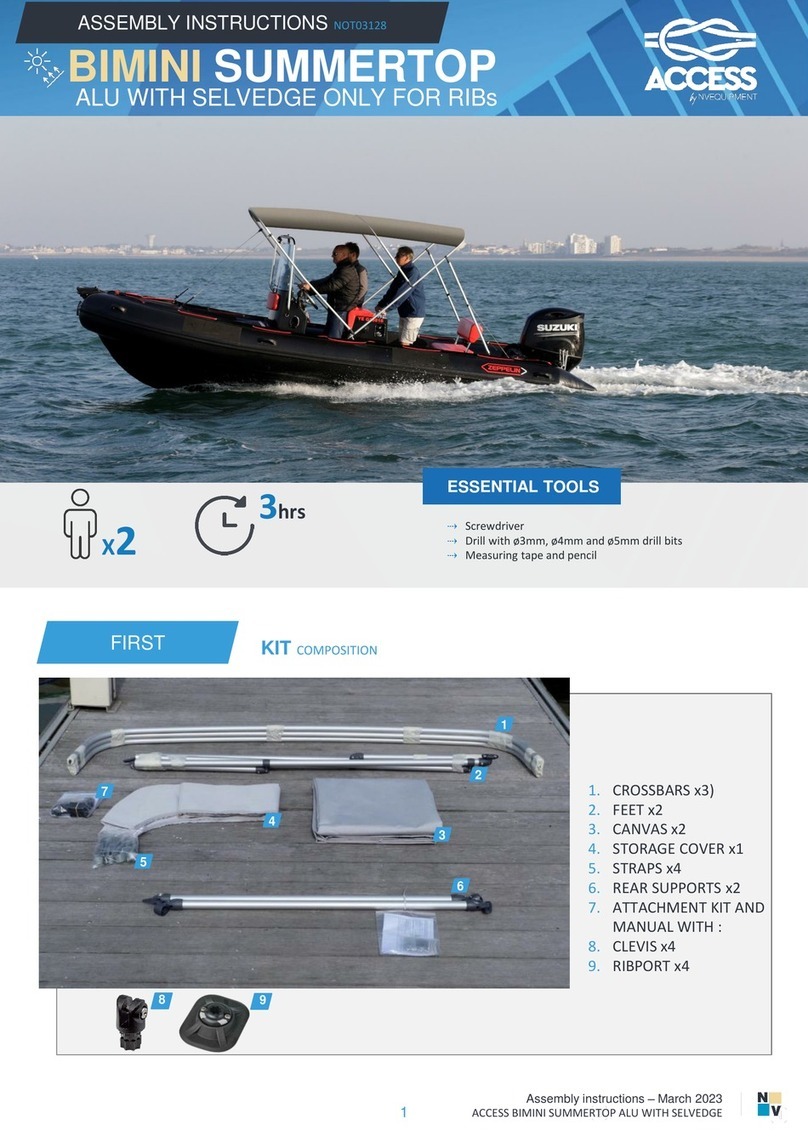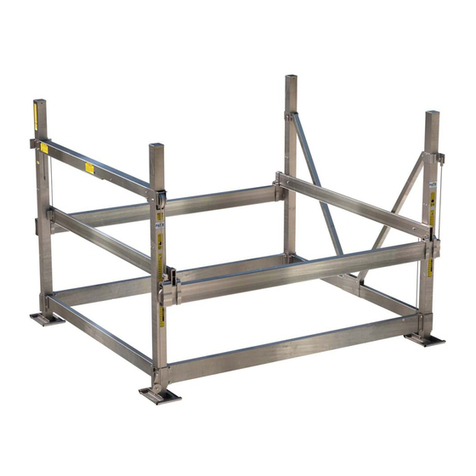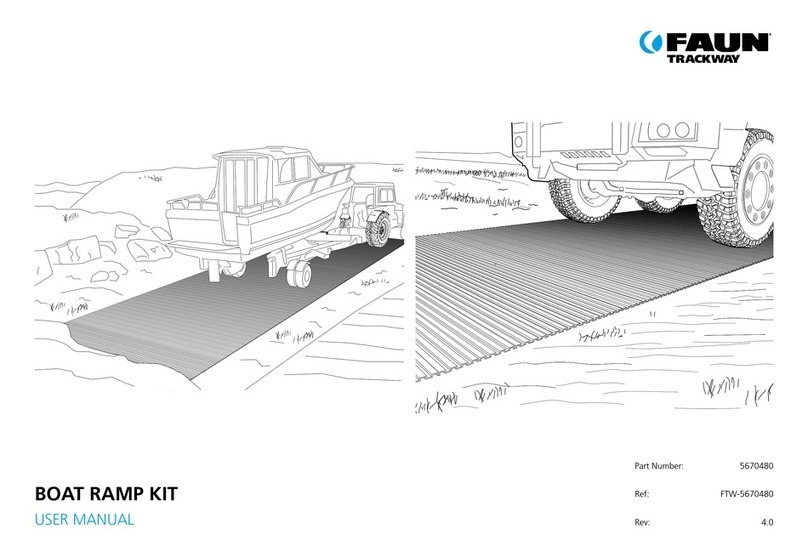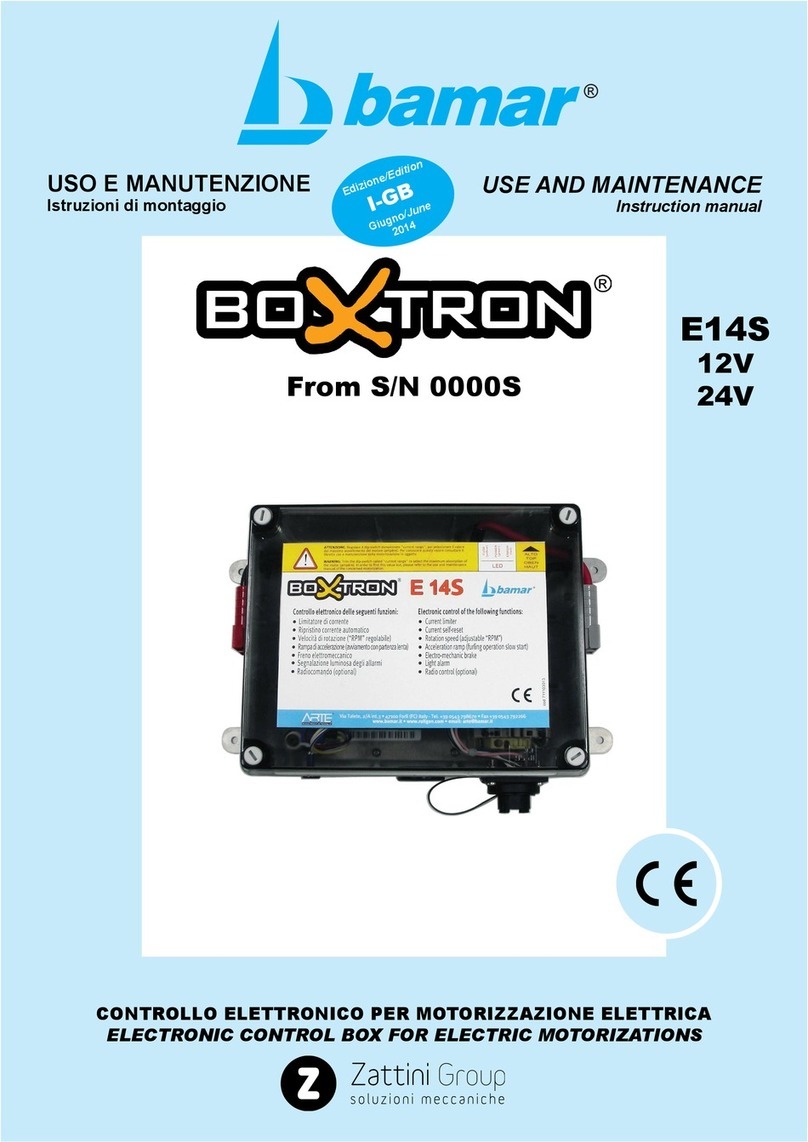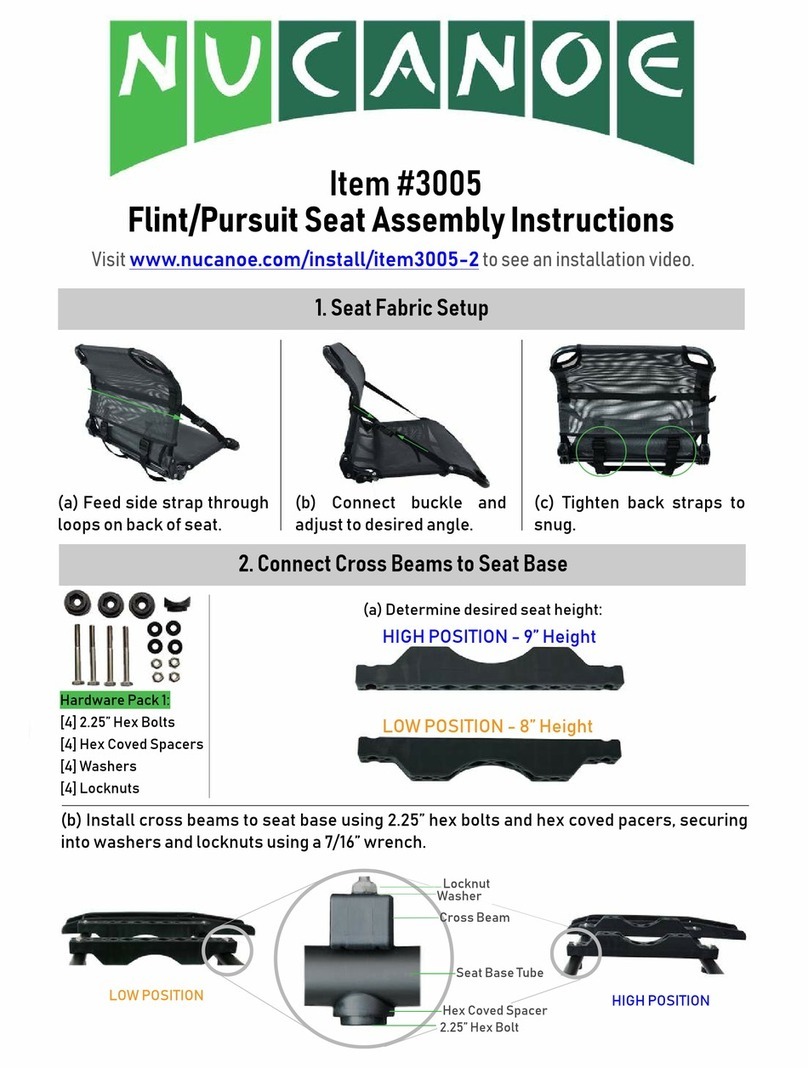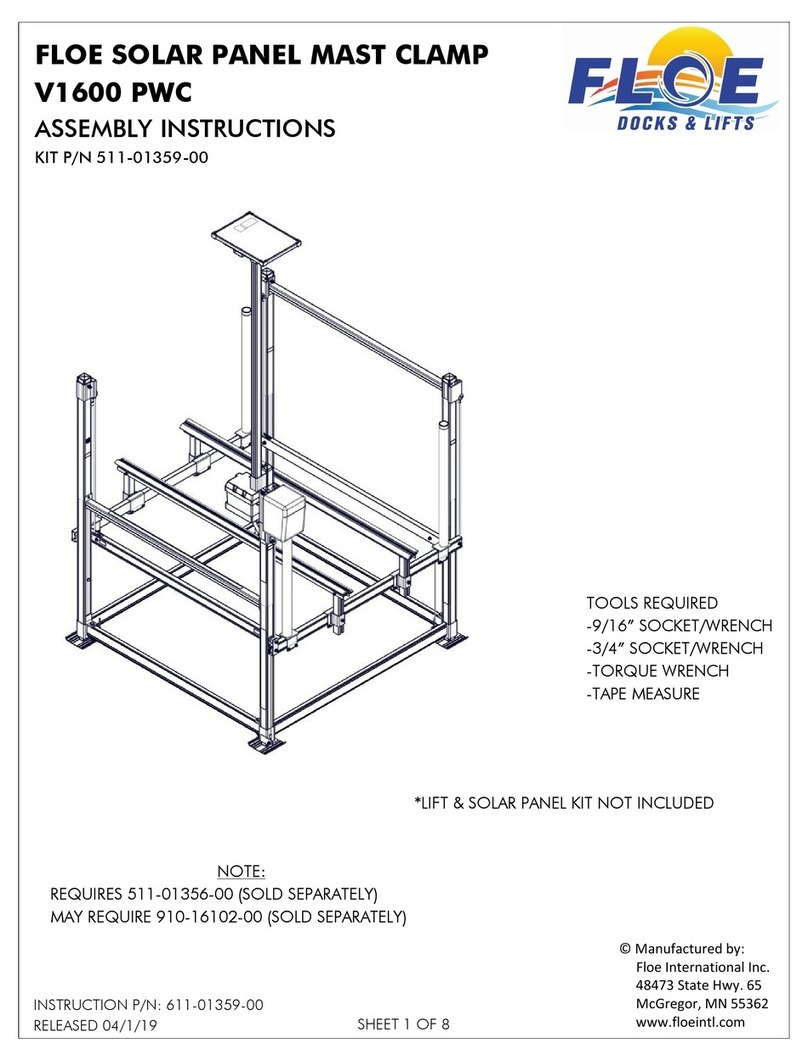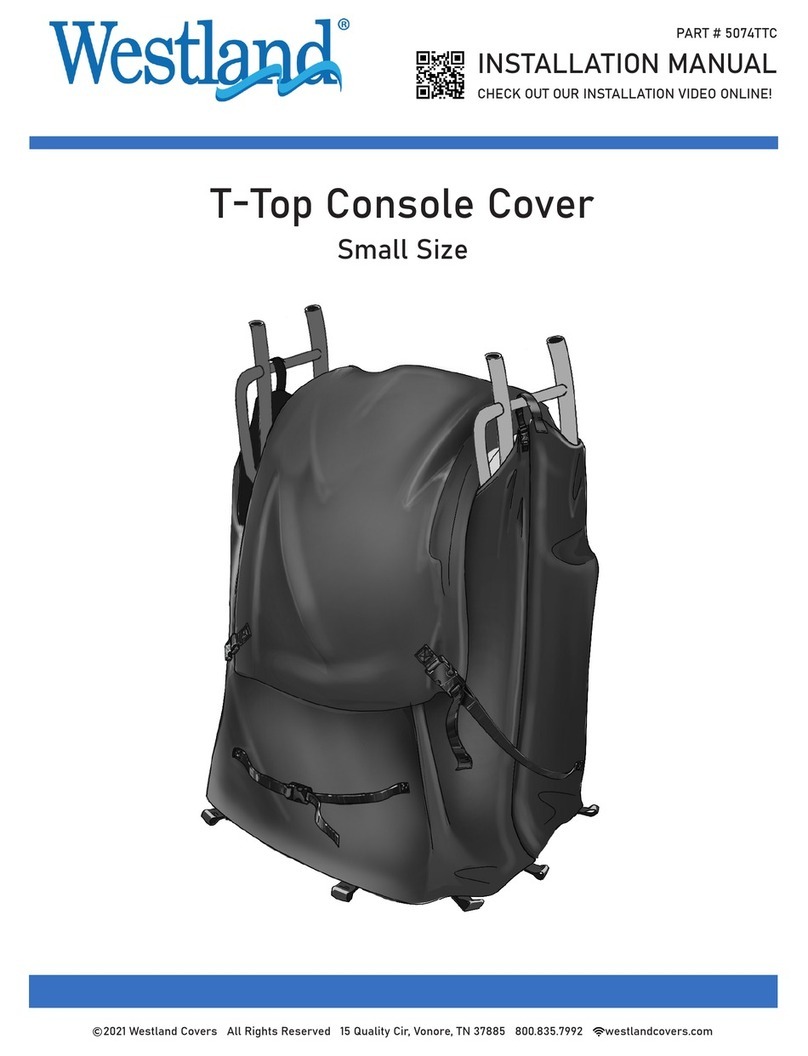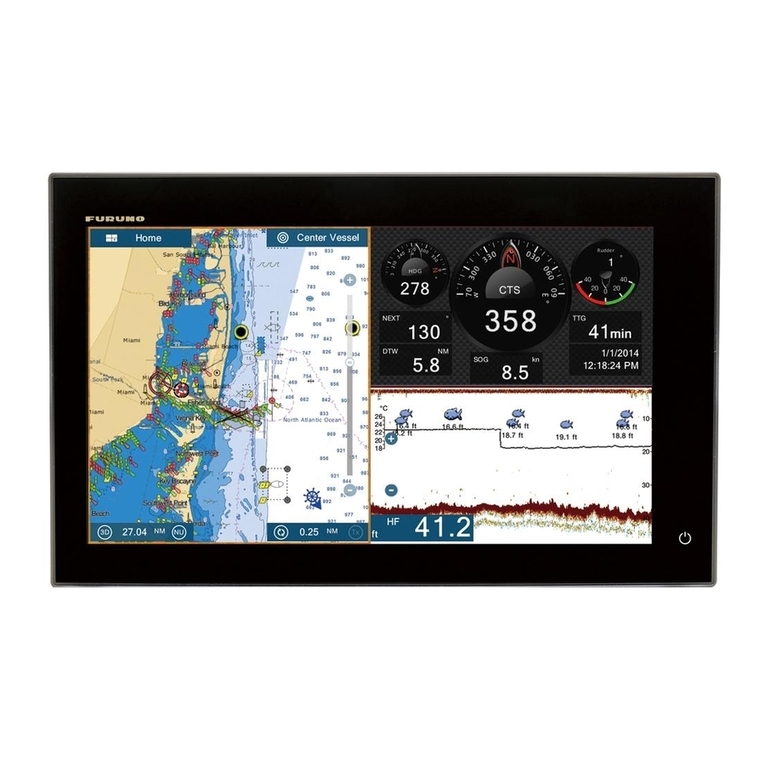
5
Manuale d’uso ZF 4-1 M / ZF 30 M
ITALIANO
Contenuto
1.1 Introduzione................................ 5
2.1 Identificazione dell’invertitore ..... 5
3.1 Descrizione................................. 5
4.1 Installazione ............................... 5
5.1 Funzionamento........................... 6
6.1 Manutenzione............................. 7
7.1 Ricerca guasti............................. 8
8.1 Dati tecnici.................................. 9
9.1 Garanzia....................................11
10.1 Fluido di trasmissione ATF ....... 82
11.1 Lista punti di assistenza ........... 83
12.1 Disegni di installazione............. 84
13.1 Warranty card........................... 95
1.1 Introduzione
1.1.1 RESPONSABILITÀ DEL
CLIENTE
Il cliente/operatore è responsabile
che i controlli per assicurare che la
lubrificazione, il raffreddamento, la ma-
nutenzione e tutto ciò raccomandato
in questo manuale siano strettamente
seguiti per fare in modo che l’inverti-
tore funzioni regolarmente ed in piena
sicurezza.
Ogni invertitore è coperto da garan-
zia, di conseguenza per la validità
della stessa, le istruzioni contenute
in questo manuale sono da seguire
scrupolosamente.
ATTENZIONE
Il produttore non è responsabile per
qualsiasi danno o perdita causati
da errate installazioni, uso sbaglia-
to dell’attrezzatura e insufficiente
manutenzione. Il Cliente si deve
assicurare che non siano presenti
alcune forze esterne come vibrazio-
ni torsionali, causate da torsione e
da flessione.
L’interazione tra motore albero ed
l’elica può portare a vibrazioni tor-
sionali producendo un martellante
rumore degli ingranaggi con la pos-
sibilità di danneggiare il motore e/o
l’invertitore.
Il Costruttore non è responsabile
di tali vibrazioni torsionali inerenti
all’installazione.
Questo manuale è costituito dai se-
guenti tre capitoli principali:
1.1.2 DESCRIZIONE
Questa parte descrive brevemente la
funzione, l’utilizzo e le parti dell’inver-
titore ZF M.
1.1.3 UTILIZZO
Questa parte descrive le procedure di
utilizzo e tutte le neccessarie misure
di sicurezza.
1.1.4 MANUTENZIONE
Questa parte contiene tutte le indica-
zioni di manutenzione e di servizio che
devono essere svolte dall’operatore.
Con i termini «sinistro, destro, babordo
e tribordo» usati in questo manuale, ci
si riferisce sempre ad invertitori instal-
lati in direzione della marcia avanti.
Importanti informazioni riguardanti
l’affidabilità tecnica e la sicurezza
nell’utilizzo sono evidenziate nel se-
guente modo:
PERICOLO
Tutte le procedure, le pratiche, le
condizioni e le raccomandazioni,
ecc., che non vengono accuramente
seguite, possono causare un danno
o la morte dell’operatore.
ATTENZIONE
Tutte le procedure, le pratiche, le
condizioni e le raccomandazioni,
ecc. se non vengono accuratamente
seguite, possono causare un danno
o la distruzione dell’attrezzatura.
NOTA: Si riferiscono ad aspetti tecnici
per i quali l’utilizzatore dell’attrezzatura
deve prestare particolare attenzione.
PERICOLO, ATTENZIONE e NOTA
precedono sempre il testo a cui si
riferiscono.
2.1 Identificazione
dell’invertitore
La targa di identificazione è applicata
sull’invertitore.
La Fig. 1 riporta un esempio di targa
di identificazione:
ANumero di serie dell’invertitore.
BCodice della trasmissione.
CRapporto di trasmissione per elica
che ruota nella stessa direzione
del motore.
DRapporto di trasmissione per elica
che ruota in direzione opposta a
quella del motore.
EOgni anno è assegnata una diver-
sa lettera progressiva.
FTipo di invertitore.
Significato delle designazioni degli
invertitori:
G Tipo di invertitore.
H Grandezza dell’invertitore.
I Versione dell’invertitore.
3.1 Descrizione
Gli invertitori marini ZF M sono delle
trasmissioni ad ingranaggi elicoidali
comandate da un meccanismo auto-
matico.
Essi si distinguono per la loro robu-
stezza e affidabilità. Nondimeno si rac-
comanda che siano scrupolosamente
osservate le seguenti istruzioni per l’in-
stallazione, l’uso e la manutenzione.
Il non osservare le istruzioni contenute
in questo manuale o ogni modifica al-
l’invertitore non autorizzata, preclude
la validità della garanzia.
Su richiesta il costruttore può fornire il
manuale di riparazione.
Fig. 2:
1) Scambiatore
2) Flangia di uscita
3) Targa di identificazione
4) Leva di azionamento.
5) Staffa telecomando.
6) Campana.
7) Albero d’ingresso
8) Asta livello olio
4.1 Installazione
Quando si installa un invertitore ZF
M devono essere scrupolosamente
seguite le seguenti indicazioni:
• L’installazione deve essere eseguita
solo da personale specializzato.
• POSIZIONE INCLINATA (Fig. 3):
La posizione della trasmissione, ri-
spetto all’albero di entrata, non deve
eccedere di un angolo di 20° (15° per
ZF MIV), in servizio continuo. Per
quanto riguarda l’inclinazione laterale
permessa contattare il costruttore.
• GIUNTO ELASTICO: Tra motore
e invertitore è necessario montare
un giunto di accoppiamento elastico
con gioco radiale minimo (0.5 mm);
tra invertitore ed asse elica, è rac-

